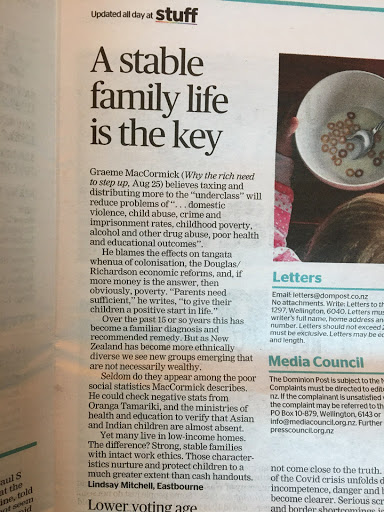This letter seems to be affirming what mine said about familiy stability - not cash hand-outs - improving a child's prospects. The writer grew up in a state house with security of tenure and a loving mother. Lone parents can also provide stability and security.
But I wanted to take issue with the last section because it's an error often repeated.
Benefits to sole mothers were not cut by 25%. From Tim Garlick's 'Social Developments': "Lone parents faced significant cuts: 10.7 percent for beneficiaries with one child; 8.9 percent for those with two children."
At the same time means-tested Family Support for beneficiary children was increased and Community Services cards were introduced to subsidise health services for low income.
In addition the maximum Child Care subsidy increased from $32 to $65 per week to assist parents to take employment.
The latter developments from the reform period have been forgotten over time.







